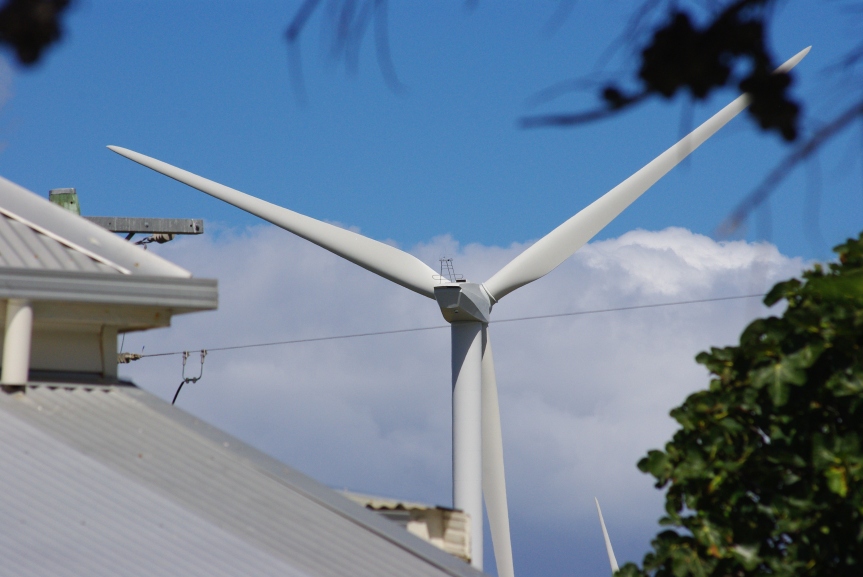Governments have spent 30 years covering up the adverse effects of wind turbine noise on neighbours, ably assisted by the wind industry’s pet acoustic consultants: Three Decades of Wind Industry Deception: A Chronology of a Global Conspiracy of Silence and Subterfuge
Australia can count its ethical acoustic engineers on one hand. The majority of them sold their souls to the wind industry for 30 pieces of silver long ago.
Men like Steven Cooper, Dr Bob Thorne and Les Huson demonstrate the ethics and integrity one associates with a learned profession. But there are plenty of others who’ve chosen dollars over decency, and who will do and say anything that their wind industry paymasters tell them to, right down to throwing fictitious figures into bogus noise-‘compliance’ reports: Pacific Hydro & Acciona’s Acoustic ‘Consultant’ Fakes ‘Compliance’ Reports for Non-Compliant Wind Farms
The connection between pulsing, low-frequency wind turbine noise and neuro-physiological effects has already been made by the Max Planck Institute in Germany: Wind Farm Victim’s Smoking Gun: German Research Reveals Infrasound Exposure Causes Stress, Sleep Disruption & More
Over the last decade, Steven Cooper has been working on the correct methods needed to properly measure the noise generated by industrial wind turbines and its effects on sleep and health.
In his latest effort, Steven teamed up with Christopher Chan to publish the following paper.
Determination of Acoustic Compliance of Wind Farms
Acoustics 2020 (2) 416-450
Steven Cooper and Christopher Chan
22 June 2020
Abstract
An issue exists around the world of wind farms that comply with permit conditions giving rise to noise complaints. Approval limits are normally expressed in A‐weighted levels (dB(A)) external to residential receivers. The distance from the wind farm to residential receivers can result in difficulty in establishing the dB(A) contribution of the wind farm, as the overall noise includes background noise that can provide masking of the wind turbine noise.
The determination of the ambient background at a receiver location (without the influence of the wind farm) presents challenges, as the background level varies with the wind and different seasons throughout the year. On‐off testing of wind farms does not normally occur at high wind farm output and limits this approach for acoustic compliance testing of a wind farm. The use of a regression analysis method developed more than 20 years ago is questioned. Anomalies with respect to compliance procedures and the regression method of analysis based on real‐world experience are discussed.
Conclusions
- Noise guidelines/standards/policies for wind farms around the world have a range of noise levels, with the majority of the limits based on a version of an Leq metric using the A‐weighted level.
- In Australia, the assessment and compliance testing of wind farms is based on the regression line method originally developed in the UK.
- Some wind farms in Australia and New Zealand give raise to noise complaints, to the extent that residents abandon their homes—despite the wind farm being “acoustically compliant” with the relevant permit conditions (based upon the regression line method).
- Australian courts rely upon the guidelines produced by planning or environmental authorities—notwithstanding that there is no evidence-based material to support the noise criteria specified for wind farms or verify that there will be no impact.
- The operation of a wind farm requires wind. It is acknowledged that the presence of wind causes the ambient noise to increase.
- The generation of inaudible wind turbine noise (i.e., contributions below the threshold of hearing) that gave rise to people (with an exposure to turbine noise over a number of years) being able to identify the operation of the test signal has led to questions raised in this technical advice.
- The Cape Bridgewater Study identified a correlation of the A‐weighted level with the wind speed, not the power output of the wind farm. It is relatively easy to identify unique narrow band spectral components associated with the operation of a wind farm. However, determining the A-weighted
contribution of the wind farm to validate predicted levels is difficult. - Derivation of the wind farm noise dB(A) contribution requires separating the wind turbine noise from the wind affected ambient noise and the residual ambient noise.
- The focus of this technical article has been to identify challenges to the derivation of the wind turbine contribution. From the perspective of psychoacoustics, it is essential to determine the actual noise contribution of a wind farm in the environment in which it occurs.
- If one is unable to determine the contribution of the wind turbine noise as part of the existing ambient noise, then one is unable to evaluate the effectiveness of predicted noise levels.
- If the predicted levels are incorrect, then the use of the A‐weighted dose response curves provided by Pedersen et al. Keith et al., Davy, Janssen, Kuwano or the WHO may be inappropriate.
- Similarly, sleep studies into noise from wind turbines could be determining the wrong threshold levels.
- Two case studies have provided the results of testing to identify the A‐weighted level of wind for the instrumentation used for the unattended logging of the ambient noise, and the identification of an additional wind based component of the ambient being related to wind on vegetation. The two
case studies were free of wind turbine noise and reveal, that in low ambient environments, the influence of wind induced vegetation noise requires larger separation distances than suggested by Hansen and Bolin. - Two case studies have identified issues with respect to compliance testing and question the ability to suggest a wind farm will be acoustically compliant at all times.
- Issues with respect to the acoustic compliance testing of operational wind farms in Australia have identified that additional research is required in determining the actual wind farm noise contribution over a range of operating parameters before one can establish full acoustic compliance.
- If one is unable to determine the noise contribution of a wind farm (inside or outside a dwelling) then for wind turbine sleep studies undertaken in a laboratory, what noise levels should be used?
- The consequence of the determination of the real noise contribution of wind farms at receiver locations could require a review of noise levels that have been used (and are currently being used) for planning purposes and in psychoacoustic research into wind farm noise.
Acoustics 2020 (2) 416-450 [PDF version of full article]



I have translated and reblogged it on
Thank you very much
Andreas
In Ontario we have an acoustic engineer whose bio states that his “favourite part ……… is the breadth of knowledge in the company that constantly allows for innovation and re-writing of the technical rules used in the industry.”
And the Development Planning Codes Commission in SA recommendation with respect to turbine noise is to hand it over to the SA EPA to handle – a Government Department which has shown a complete lack of knowledge, expertise and understanding of how these massive industrial turbines produce noise.
They don’t even seem to want to know, as long as the Industry can hand them some nonsense to use.
With something so important to the life and health of this Nation you would think the noise from these turbines would be up there at the pinnacle of desire for knowledge and understanding.
Even with free input from people like Steven Cooper they seem to struggle with the concept that huge blades connected to multiple enormous machines spread across many acres of land, being turned by the ever changing winds strength and direction could create anything other than a benign whisper.
Oh how good it would be to be so stupid and get paid for it.
In relation to noise compliance at our former property at Waubra,compliance has been claimed by the operator, when there was no noise investigation being done outside within 10 mts of our former dwelling.
At the Waubra Wind Farm, like most wind farms in Victoria, there is no noise limit written in the noise conditions of the development approval. But a level of 40dBA LA95 is specified, meaning that a level of 40dBA is allowed to be exceeded for 95 per cent of the measurement period, which is therefore only considering the quietest 5 per cent of the time under investigation.
When this is considered in the night time period, whereby the noise level must not exceed the level for more than 10 per cent of the night time period, this is not possible as LA95 considers only the quietest 5 per cent of the night time period. Which begs the question, is this compliance? Wind farm operators pay for their so called independent acoustic reports, that are NOT independent of the wind farm operator in question, or rely on reports that do not exist.
Noel Dean
Reblogged this on ajmarciniak and commented:
Governments have spent 30 years covering up the adverse effects of wind turbine noise on neighbours, ably assisted by the wind industry’s pet acoustic consultants: Three Decades of Wind Industry Deception: A Chronology of a Global Conspiracy of Silence and Subterfuge
Australia can count its ethical acoustic engineers on one hand. The majority of them sold their souls to the wind industry for 30 pieces of silver long ago.
Men like Steven Cooper, Dr Bob Thorne and Les Huson demonstrate the ethics and integrity one associates with a learned profession. But there are plenty of others who’ve chosen dollars over decency, and who will do and say anything that their wind industry paymasters tell them to, right down to throwing fictitious figures into bogus noise-‘compliance’ reports: Pacific Hydro & Acciona’s Acoustic ‘Consultant’ Fakes ‘Compliance’ Reports for Non-Compliant Wind Farms
The connection between pulsing, low-frequency wind turbine noise and neuro-physiological effects has already been made by the Max Planck Institute in Germany: Wind Farm Victim’s Smoking Gun: German Research Reveals Infrasound Exposure Causes Stress, Sleep Disruption & More
Over the last decade, Steven Cooper has been working on the correct methods needed to properly measure the noise generated by industrial wind turbines and its effects on sleep and health.
In his latest effort, Steven teamed up with Christopher Chan to publish the following paper.
Reblogged this on uwerolandgross.